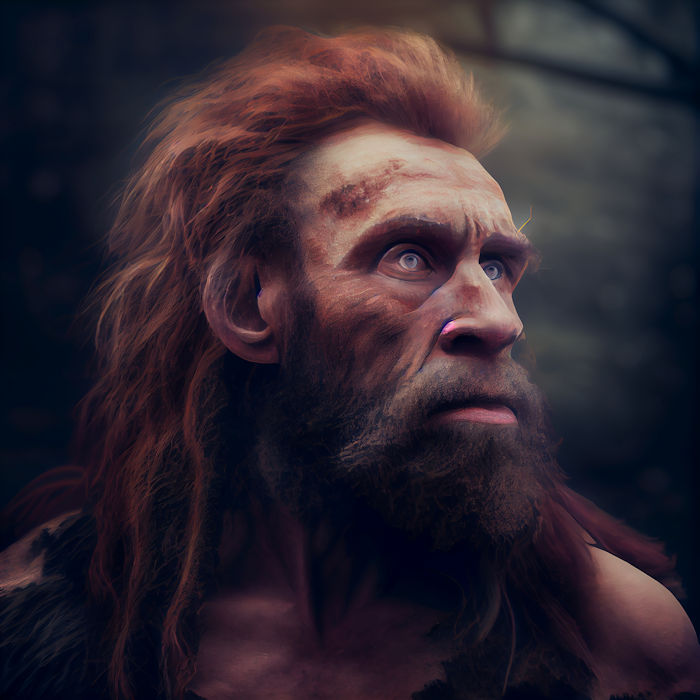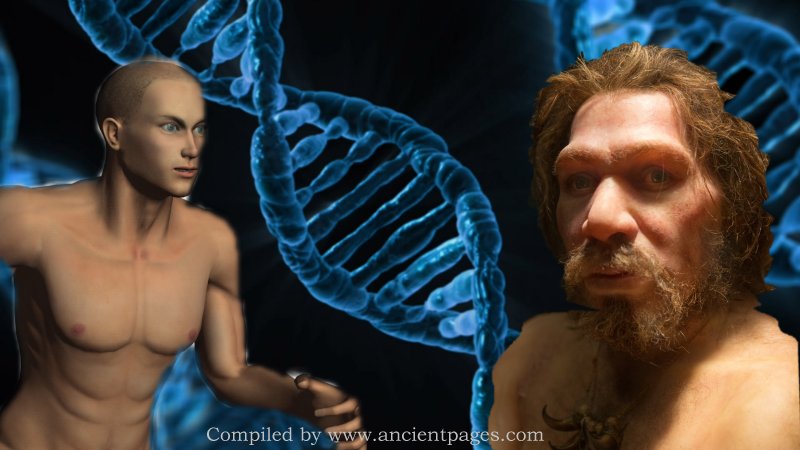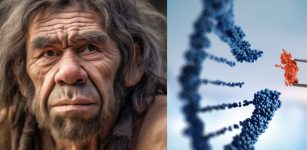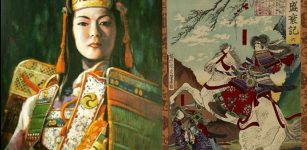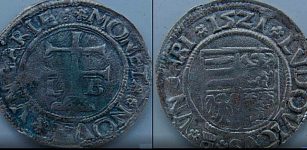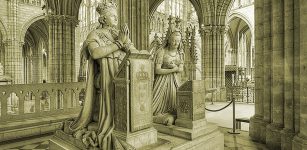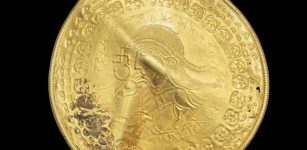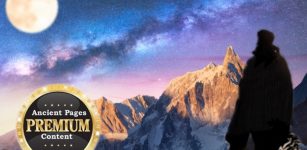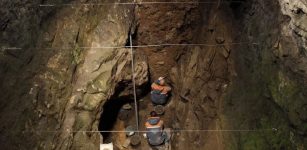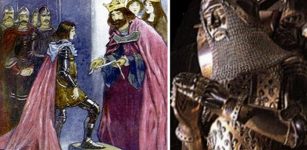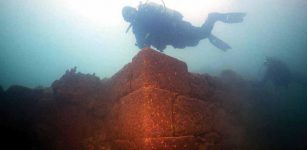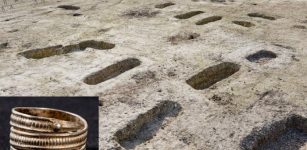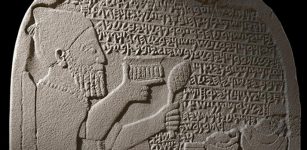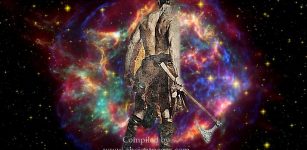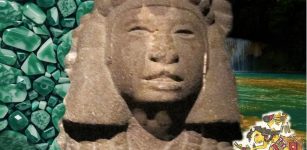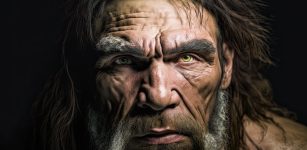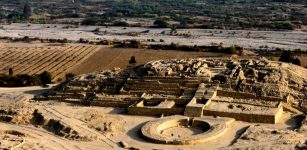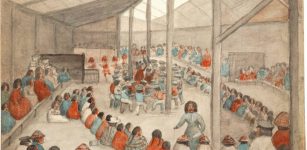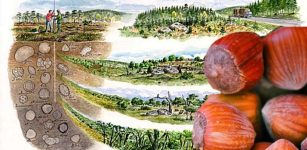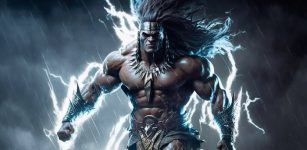World Map Of Neanderthal And Denisovan DNA In Modern Humans
Jan Bartek - AncientPages.com - The Denisovans and the Neanderthals are long gone, but their DNA can be found in certain modern humans. According to researchers, some present-day humans derive up to ~5% of their ancestry from archaic Denisovans, an even larger proportion than the ~2% from Neanderthals.
The DNA of Neanderthals and Denisovans is alive in some modern humans. Credit: Adobe Stock - Stefan
The Harvard Medical School/UCLA research team has created a world map of archaic ancestry in modern humans. This comprehensive DNA map suggests that many bloodlines worldwide, particularly of South Asian descent, may actually be a bit more Denisovan, a mysterious population of hominids that lived around the same time as the Neanderthals.
The analysis also proposes that modern humans interbred with Denisovans about 100 generations after their trysts with Neanderthals.
Researchers used comparative genomics to make predictions about where Denisovan and Neanderthal genes may be impacting modern human biology. While there is still much to uncover, Denisovan genes can potentially be linked to a more subtle sense of smell in Papua New Guineans and high-altitude adaptions in Tibetans. Meanwhile, Neanderthal genes found in people worldwide most likely contribute to tougher skin and hair.
"There are certain classes of genes that modern humans inherited from the archaic humans with whom they interbred, which may have helped the modern humans to adapt to the new environments in which they arrived," says senior author David Reich, a geneticist at Harvard Medical School and the Broad Institute.
"On the flip side, there was negative selection to systematically remove ancestry that may have been problematic from modern humans. We can document this removal over the 40,000 years since these admixtures occurred."
This map shows the proportion of the genome inferred to be Denisovan in ancestry in diverse non-Africans. The color scale is not linear to allow saturation of the high Denisova proportions in Oceania (bright red) and better visualization of the peak of Denisova proportion in South Asia. Credit: Sankararaman et al./Current Biology
During the study, scientists found evidence that both Denisovan and Neanderthal ancestry has been lost from the X chromosome, as well as genes expressed in the male testes. They theorize that this has contributed to reduced fertility in males, which is commonly observed in other hybrids between two highly divergent groups of the same species.
The researchers collected their data by comparing known Neanderthal and Denisovan gene sequences across more than 250 genomes from 120 non-African populations publically available through the Simons Genome Diversity Project (there is little evidence for Neanderthal and Denisovan ancestry in Africans).
The analysis was carried out by a machine-learning algorithm that could differentiate between components of both kinds of ancestral DNA, which are more similar to one another than to modern humans.
The results showed that individuals from Oceania possess the highest percentage of archaic ancestry, and south Asians possess more Denisovan ancestry than previously believed. This reveals previously unknown interbreeding events, particularly in relation to Denisovans.
In contrast, Western Eurasians are the non-Africans least likely to have Neanderthal or Denisovan genes. "The interactions between modern humans and archaic humans are complex and perhaps involved multiple events," Reich says.
"The evidence of Denisovan admixture in modern humans could in theory be explained by a single Denisovan introgression into modern humans, followed by dilution to different extents in Oceanians, South Asians, and East Asians by people with less Denisovan ancestry. If dilution does not explain these patterns, however, a minimum of three distinct Denisovan introgressions into the ancestors of modern humans must have occurred," the scientists write in their study.
"We estimated the probability of Neanderthal and Denisovan ancestry for each phased genome in each population. We report the mean and SD of the proportion of confidently inferred archaic alleles (marginal probability >50%) across diploid individuals within each population. The highest point estimate of Neanderthal ancestry is in Oceania," scientists explained in their study. Credit: Current Biology
The study's main limitation is that it relies on the current library of ancient genomes available. The researchers caution against drawing any conclusions about our extinct human ancestors based on the genetics and possible traits that they left behind. 1
"We can't use this data to make claims about what the Denisovans or Neanderthals looked like, what they ate, or what kind of diseases they were susceptible to," says Sankararaman, first author on the paper. "We are still very far from understanding that."
In recent years, scientists have determined how much of our DNA is unique to us. It turns out it is a small fraction, really, just 7% of our DNA is unique to modern humans!
According to a study published by Science Advances, humans are not much different from Neanderthals.
“Much of the current genetic variation within humans predates the split, estimated at 520 to 630 thousand years (ka) ago, between the populations that would become modern humans and Neanderthals. The shared genetic variation present in our common ancestral population is still largely present among humans today and was present in Neanderthals up until the time of their extinction.
This phenomenon, which is known as incomplete lineage sorting (ILS), means that any particular human will share many alleles with a Neanderthal that are not shared with some other humans. Therefore, humans often share genetic variation with Neanderthals not by admixture but rather by shared inheritance from a population ancestral to us both,” the scientists wrote in their paper. 2
The results of this study were based on DNA extraction from fossil remains of now-extinct Neanderthals and Denisovans dating back to around 40,000 or 50,000 years ago, as well as from 279 modern people from around the world.
The world map of archaic ancestry identifies regions with elevated proportions of Archaic ancestry which helps scientists to study the relationship between the Neanderthals, Denisovans, and modern humans.
Written by Jan Bartek - AncientPages.com Staff Writer
Expand for references- Current Biology, Sankararaman et al.: "The Combined Landscape of Denisovan and Neanderthal Ancestry in Present-Day Humans" dx.doi.org/10.1016/j.cub.2016.03.037
- Nathan K. Schaefer et al. ,An ancestral recombination graph of human, Neanderthal, and Denisovan genomes.Sci. Adv.7, eabc0776(2021).DOI:10.1126/sciadv.abc0776

